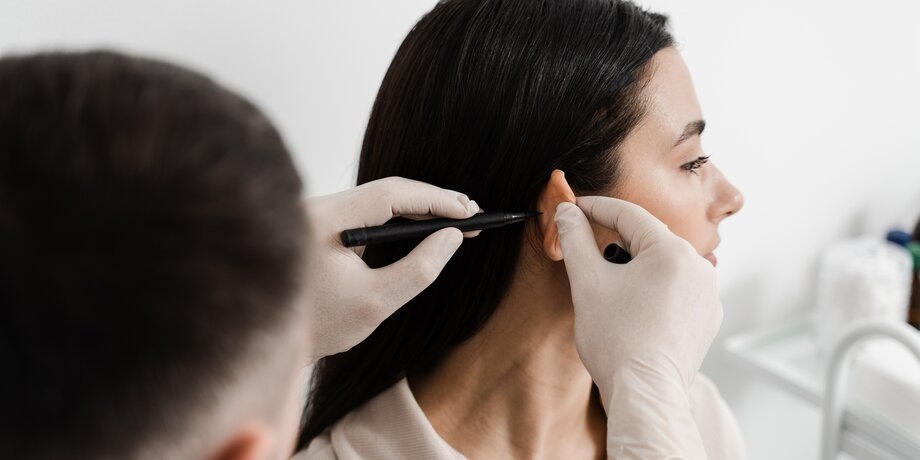Ear reshaping procedures have evolved over the years to become more efficient and safer. With technological advances, people in the capital are increasingly choosing ear correction surgeries for aesthetic and functional improvements. Whether it’s correcting protruding ears, repairing ear injuries, or adjusting congenital ear deformities, many are turning to Ear Shape Improvement in Islamabad for reliable results.
In this comprehensive guide, we explore the recovery timeline and post-operative care tips every patient must follow to ensure the best outcomes.
Understanding the Procedure and Its Goals
Ear shape improvement, medically known as otoplasty or pinnaplasty, involves altering the shape, position, or size of the ears. The procedure may be done for children or adults and typically addresses:
-
Protruding ears
-
Asymmetrical ears
-
Disfigurement due to injury
-
Congenital deformities
The goal is not only to create a natural-looking shape but also to ensure long-term comfort and satisfaction for the patient. Recovery and aftercare play a crucial role in achieving these results.
Immediate Post-Operative Phase (Day 1–3)
What to Expect:
The first few days after surgery are critical for setting the tone of the healing process.
-
Swelling and Discomfort: Mild to moderate pain, swelling, and redness are expected.
-
Headband or Bandages: A compressive headband or dressings are typically applied to protect the ears and maintain their new shape.
-
Rest and Recovery: Bed rest is encouraged for the first 24–48 hours, but short walks are allowed to prevent blood clots.
Care Tips:
-
Keep your head elevated while resting.
-
Take prescribed medications on time.
-
Avoid touching or disturbing the bandage.
-
Refrain from washing your hair or ears during this phase.
Short-Term Healing Phase (Day 4–14)
What to Expect:
By this time, patients start to feel better and more mobile. However, care must continue.
-
Reduced Pain: Discomfort lessens significantly after the first week.
-
Sutures: In many cases, sutures are dissolvable. If not, the surgeon will remove them after 7–10 days.
-
Bruising: Bruising may still be visible, but it fades gradually.
Care Tips:
-
Continue wearing the headband, especially while sleeping.
-
Avoid bending over, lifting heavy items, or engaging in strenuous activity.
-
Maintain hygiene around the surgical site using saline or antiseptic solutions recommended by your surgeon.
-
Attend all follow-up appointments.
Mid-Term Recovery (Week 3–6)
What to Expect:
-
Stabilization of Ear Shape: The new shape begins to set more firmly.
-
Decreased Swelling: Most of the swelling will subside during this period.
-
Return to Normal Activities: Light exercise and daily routines can resume, although high-impact sports should still be avoided.
Care Tips:
-
Continue gentle cleaning around the ears.
-
Wear your headband only during sleep, as advised by the surgeon.
-
Avoid sun exposure, as healing skin is more sensitive to UV damage.
-
Monitor for any unusual symptoms like discharge, pain, or shape irregularities.
Long-Term Healing (Month 2–6)
What to Expect:
-
Final Results: The ears will have settled into their permanent shape.
-
Scars Maturing: While scarring is minimal and hidden behind the ears, they continue to mature and fade.
-
Normal Activity: Patients can usually return to all activities, including sports, unless otherwise advised.
Care Tips:
-
Use sunscreen or wear protective clothing if ears are exposed to sunlight.
-
Moisturize the area to reduce tightness and promote skin health.
-
Avoid piercings or trauma to the ears for at least six months.
-
Continue monitoring for any signs of complications.
Potential Complications and When to Call Your Surgeon
Although rare, complications can arise, especially if aftercare instructions are not followed.
Watch for:
-
Persistent or increasing pain
-
Bleeding or pus discharge
-
Fever or chills
-
Sudden changes in ear shape
-
Allergic reactions to bandages or medications
If any of these occur, patients should immediately consult their surgeon. Early detection ensures swift resolution of potential issues.
Psychological and Emotional Recovery
Post-operative periods often involve not just physical healing but emotional adjustment too. Some patients may experience self-consciousness, while others feel a significant boost in confidence once the swelling subsides and the final results become visible.
Supportive Tips:
-
Maintain realistic expectations—healing takes time.
-
Stay in touch with your surgeon if you feel uncertain about your progress.
-
Share your journey with others who have undergone similar procedures.
-
Focus on your overall health through good nutrition, hydration, and rest.
Lifestyle Adjustments for Long-Term Success
Making minor changes in your daily routine can prolong the benefits of ear shape improvement.
-
Avoid sleeping on your sides until your surgeon approves.
-
Choose hairstyles that don’t pull on the ears.
-
Be cautious when wearing headphones or eyewear.
-
During sports, use protective gear like headbands or helmets as appropriate.
These actions may seem minor, but they can contribute significantly to long-term success.
What Patients Say: A Glimpse Into Real Experiences
Most patients report high satisfaction rates with ear reshaping procedures, especially when they adhere strictly to the aftercare regimen.
-
Children often enjoy improved confidence in school environments.
-
Adults report feeling more balanced facially and psychologically satisfied.
-
Many emphasize how crucial the first 2–4 weeks of healing were in determining their overall results.
Their common advice: follow the surgeon’s instructions diligently and be patient with your healing journey.
Choosing the Right Surgeon and Facility
Selecting a qualified surgeon plays a pivotal role in recovery outcomes. Always opt for:
-
Board-certified professionals
-
Clinics with excellent aftercare protocols
-
Facilities offering personalized recovery plans
Dynamic Clinic Islamabad provides comprehensive consultation, skilled surgical execution, and individualized recovery guidance for patients seeking safe and effective results.
Dynamic Clinic Islamabad combines medical expertise with compassionate care to ensure every patient experiences a smooth, successful transformation.
Conclusion
Recovery after ear shape improvement is a journey that requires time, care, and diligence. From the initial days of swelling and dressings to the final phase of scar fading and lifestyle adjustments, every step matters.
Following a structured post-operative plan not only reduces the risk of complications but also enhances the aesthetic outcome. Remember, the investment you make in proper aftercare is just as important as the procedure itself.




